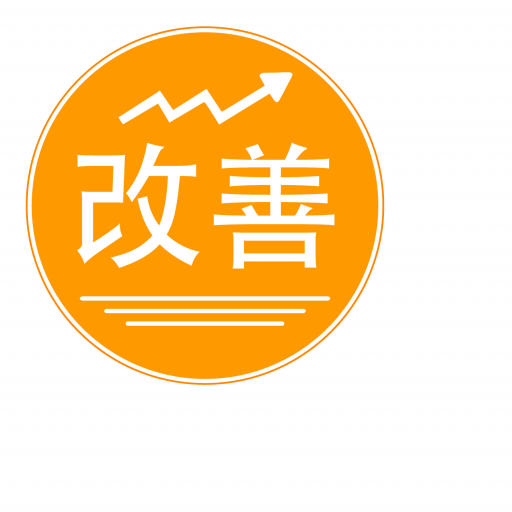Discover the importance of organizational alignment and agility in this blog post. Learn how establishing a strong CORE and building a strategy around it can lead to sustainable growth and success. Find out how alignment and agility empower your organization to thrive in an ever-changing business landscape.

EOS is just that, an Operating System
Welcome to those unfamiliar with EOS, the Entrepreneurial Operating System. This system aims to bolster businesses by synchronizing six key components that optimize operational effectiveness. These components include:
- Vision
- People
- Issues
- Traction (meetings and goals or “Rocks”)
- Processes
- Data
I advocate for EOS, as every company should utilize a system that enhances its performance. However, through my experiences working with clients implementing EOS, I’ve realized that it serves primarily as an Operating System rather than a business model that creates an agile growth company.
As defined by Wikipedia, an Operating System is “the software that supports a computer’s basic functions, such as scheduling tasks, executing applications, and controlling peripherals.” In a business context, I describe it as “a framework that underpins a company’s essential functions, like establishing a vision, assembling the right team, refining meetings, setting goals (rocks), and so on.” Although I risk ruffling the feathers of EOS Implementers®, I contend that EOS meets these criteria to a certain extent but often falls short of empowering companies to construct a growth engine.
Let’s delve into what is required to create a growth company.
The Hedgehog Concept
In Good to Great, Jim Collins discussed the Hedgehog Concept named after Isaiah Berlin’s essay, “The Hedgehog and the Fox,” dividing the world into hedgehogs and foxes. The theme is based on an ancient Greek parable: “The fox knows many things, but the hedgehog knows one big thing.” Collins found that those companies that became great followed the Hedgehog Concept. Those companies which didn’t tend to be foxes never gained the clarifying advantage of a Hedgehog Concept, being instead scattered, diffused, and inconsistent.
The Hedgehog Concept is based on the questions prompted by the three confluences of questions.
- What can you be the best in the world at?
- What are you deeply passionate about?
- What drives your economic engine?
The EOS Model® doesn’t focus on the hedgehog concept, so many companies using EOS have goals and strategies based on bravado rather than understanding what will enable them to be great.
Knowing your hedgehog concept will keep the organization focused on something that aligns its passion with what it can be the best at. Being good at something means you are good but indistinguishable from many others. If you stand above the crowd if you are the best at something. Finally, the economic engine keeps the company focused on a metric that drives profit.
Vision
While the EOS Method® works to develop a ten-year goal, I find that it is not as compelling as Jim Collins’ BHAG. A BHAG, Big Hairy Audacious Goal, is a clear and persuasive statement and serves as a unifying focal point of effort with a defined finish line. It engages people, is tangible, energizing, highly focused, and often creates immense team effort. People “get it” immediately; it takes little or no explanation.
A visionary BHAG is a 10–25-year compelling goal that stretches your company to achieve greatness. It should be a huge, daunting task, like climbing Everest or going to the moon, which at first glance, no one in the company knows how on earth you will achieve.
As Collins noted, the best BHAGs require both “building for the long term and exuding a relentless sense of urgency: What do we need to do today, with monomaniacal focus, and tomorrow, and the next day, to defy the probabilities and ultimately achieve our BHAG?”
Profit/X = Economic Engine
The BHAG’s economic engine is the concept of Profit/X. In Good to Great, Jim Collins defines this strategic metric as “One and only one ratio to systematically increase over time, what x would have the greatest and most sustainable impact on your economic engine?” Unfortunately, too many companies don’t have an economic engine, so they fail to deliver hoped-for profits. This metric is not easily identified; however, Collins noticed that the companies that took the time to discuss, debate, and agree on one key driver for their economic engine are the ones that went from good to great.
Profit/X is how you choose to make money; it is a strategic metric, not an operational one. This ratio is a key driver in your financial engine and when you decide how to spend money. When developing your Profit/X, you need to have one that is unique and not the industry average because if you choose the latter, everyone will be pricing and driving costs the same way to maximize it. Like the BHAG, a correctly defined Profit/X will promote teamwork as everyone can focus on their role to drive the metric, from how many people to hire, where to open new operations, etc.
Value Creation
“A Business That Doesn’t Create Value for Others is a Hobby.” So, what value does your organization create? Value creation is linked to what your company can excel at. However, businesses must identify the problem they aim to solve for their customers. Clayton Christensen defined this as “What is the job your customer is hiring you or your products to do?” Many organizations mistakenly define the job based on their activity rather than focusing on their customers’ needs. Identifying the job to be done can help target marketing and sales efforts toward addressing customers’ problems rather than simply promoting the company’s activities. The EOS Model® does not sufficiently address this essential question, which is critical for a company’s growth.
Core Customer
Understanding your company’s Core Customer is vital. If have found that many businesses cannot identify their Core Customer. Some of the key metrics of a Core Customer are one that pays on time, allows you to make a satisfactory profit, and refers you. Focusing on the wrong Core Customer can lead to misguided marketing and sales activities, reducing profitability and cash flow and ultimately weakening the company’s performance and growth.
Brand Promise
The EOS Model® does not address the question of Brand Promise, which is crucial for a company’s growth. Your Brand Promise is what convinces your target audience to buy from you, stands as a testament to your commitment, and serves as a measurable benchmark for your company’s performance. Some organizations have a Brand Promise, but if it’s not quantifiable, it becomes “valueless” because nobody knows if you’re delivering on it, rendering it useless to prospects and clients.
Value Delivery
Value delivery is essential for understanding how customers perceive your organization’s performance. While the EOS Model® discusses various metrics, value delivery does not receive adequate attention. Companies must determine whether their customers are satisfied with their performance. A CEO might assume that their customers are “Very Satisfied,” but they may be overlooking the reality of customer dissatisfaction and lack of recommendations without measuring it.
Critical Number and Counter Critical Number
The EOS Model® effectively deals with goals (Rocks) and meetings but fails to align Rocks with the long-term goals of the company, Rock should be tied to the quarter’s Critical Number, which drives the organization toward its long-term goals. Tying Rocks with the Critical Number maintains organizational focus. In addition, a Counter Critical Number is crucial to prevent the critical number from overwhelming the company and causing unintended consequences.
Focusing on a Critical Number and Counter Critical Number during the 13-Week Sprint is crucial for developing focus and alignment within the organization.
Team Alignment
While the EOS Model® effectively addresses having the “Right People” in the “Right Seats,” it does not consider alignment among the leadership team and employee satisfaction. Assessing the alignment of leadership and employee satisfaction is necessary to ensure everyone is working in the same direction and committed to the company’s success.
Conclusion
While I appreciate the EOS Model®, I believe it fails to address many aspects required to develop a healthy agile growth company. By incorporating additional elements from the Gravitas’ 7 Attributes of Agile Growth® model, businesses can create a more comprehensive system that promotes agile growth while maintaining smooth operations. The 7 Attributes of Agile Growth® focus on Leadership, Strategy, Execution, Customer, Profit, Systems, and Talent.
If you are interested in transitioning to an agile growth company with the help of a certified Gravitas Agile Growth coach, please feel free to reach out to me.
Copyright (c) 2021, Marc A. Borrelli
Recent Posts
Align and Thrive: The Importance of Organizational Alignment and Agility
How to Achieve Smart Time Management: 10 Tips for Busy Professionals
When you are a busy professional running your own business, it can often feel like there aren’t enough hours in the day to accomplish everything. Being strategic with your time is the best (and possibly the only) way to achieve all of your daily tasks. If you are...
5 Strategic Leadership Skills Every Manager Needs
So often, people view leadership as a talent: you’re either born with this quality or you’re not. However, this is not always the case! In reality, good leadership is made up of skills, and anyone can learn how to improve. Some people may pick up leadership attributes...
How the Sellability Score is Calculated: The Ultimate Guide
Do you have questions about how to calculate your business’s sellability score? Whether you’re looking to sell your business in the near future or years from now, understanding your sellability score will help you thrive. The sellability score identifies the...
The Top 5 Benefits of the Entrepreneurial Operating System
As an entrepreneur running your own business, you know there are bumps in the road and struggles that both you and your business will face over time. However, with the right people and tools at your disposal, you can anticipate what’s coming, plan for it, and continue...
5 Ways to Use Email Automation to Boost Traffic
Every single business in the world wants to evolve and grow. This will happen using a variety of techniques and strategies. In 2022, digital marketing is more than a household name, and most companies will adopt at least a few ideas when long-term planning and coming...
6 Questions To Ask A Potential Business Coach Before Hiring Them
Many entrepreneurs consider executive business coaching when they start struggling on their professional path. A small business coach is an experienced professional mentor who educates, supports, and motivates entrepreneurs. They will listen to your concerns, assess...
3 Ways Proper Long Term Strategic Planning Helps Your Business
Dreams turn into goals when they have a foundation of long-term strategic planning supporting them. They become reality when the ensuing strategic implementation plan is executed properly. With Kaizen Solutions as their strategic planning consultant, small and...
What is a Peer Group, and How Can it Improve Your Career?
If you are a CEO or key executive who has come to a crossroads or crisis in your career, you'll gain valuable insights and solutions from a peer group connection more than anywhere else. But what is a peer group, and how can that statement be made with so much...
Profit and Revenue are Lousy Core Values
As I mentioned last week, I am down with COVID and tired, so spending more time reading rather than working. I read Bill Browder's Freezing Order this weekend, and I highly recommend it. However, at the end of the book, Browder says that oligarchs, autocrats, and...











